Iran-Backed Media Introduce Possible Targets In War On Israel

An Iranian news website has cited “resistance front” media, introducing the most important and sensitive locations in Israel which can be targeted in any future war.

An Iranian news website has cited “resistance front” media, introducing the most important and sensitive locations in Israel which can be targeted in any future war.
Tasnim news agency, which is affiliated with Iran’s Revolutionary Guards, quoted a report by Al-Mayadeen network publishing Israel’s sensitive locations, including many civilian targets.
Al Mayadeen TV is a media outlet close to Iran-backed Lebanese militant organization Hezbollah.
Palestinian militant groups and other Iranian allies and proxies are often referred to collectively as the “Resistance” in Iranian official jargon.
The Knesset, prime minister’s office, ministries of foreign affairs, defense, finance, and communications are among the main locations listed as potential targets.
Nuclear sites and facilities including Tirosh Special Weapons Facilities, Israel Institute of Technology, the Rafael Arms Development Authority, and Weizmann Institute of Science are also mentioned in this report as the strategic centers.
The report also says that Israel heavily relies on a series of civilian airports that provide them with safe access to various countries in the world, saying these airports are a proper target for resistance front attacks. The airports are Ben Gurion in Lod, Haifa, and Ramon in southern Israel.
Some military bases like Ramat David in Haifa, Hatzerim and Nevatim Airbases in Be'er Sheva, as well as Urim intelligence-gathering installation are among non-civilian sites introduced as targets to “cripple Israelis’ lives.”

Iran has once again threatened the United States, Israel and their allies saying that “they will be defeated in the World War they have waged against Iran.”
Revolutionary Guard Commander Hossein Salami said Sunday that “We are determined to stand against them. We will turn this new battle scene, this huge sedition scene, and this world war into a burial ground for America, Israel and their allies,” singling out Saudi Arabia, the United Kingdom, France and Germany.
During his visit to Zahedan in the southeast after weeks of antigovernment protests in the mostly Sunni region, Salami once again upped the ante against Israel saying the “Zionist” regime would collapse.
“We will bury plots to target Iran, just as we've buried Israeli and American plots in the past,” he added.
Salami’s visit to Sistan and Baluchestan province comes at a time the regime has been in hot water there within the past weeks after killing least 100 people,including a nine-year-old girl during anti-government protests.
The hardliner commander labeled protesters as “non-believers”, saying, “Today on one side is the Front of Kufr [disbelief] with all its might and on the other is the Front of Islam, one cannot stand in the middle, the lines are clear, one side is led by America and Israel and the other side is led by the Supreme Leader of the revolution [Ali Khamenei] and believers and revolutionaries.”
His remarks come a day after Khamenei warned demonstrators to bring the movement to an end and showed a green light for more crackdown.
However, some believe Salami’s comments on “unity” in a region with Sunni majority is the last attempt by the government to pacify the situation there while it is already under pressure with the situation in the northwest Kordestan province.
In early November the leader of Iran’s largely Sunni Baluch population in the southeastern province of Sistan and Baluchestan strongly criticized the authorities for their brutality in the province, holding Supreme Leader Khamenei responsible for the violence against Sunnis and other protesters.
“A government with which people are dissatisfied is no good and has to be toppled,” Molavi Abdolhamid stated, demanding the release of all those arrested in the protests across the country.
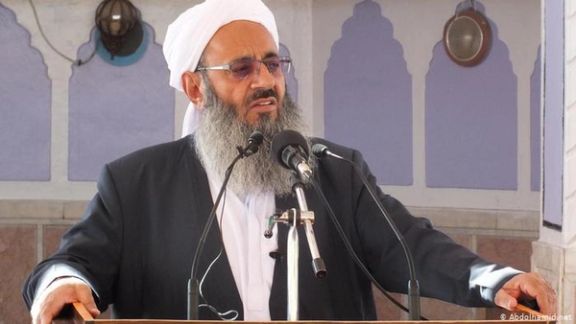
He also blasted more than 200 members of Iran’s parliament who demanded the death sentence for some protesters. “In Khamenei’s rule there is no freedom. Which political party or group is free? We have neither freedom of speech, nor freedom of media,” he added in unprecedented criticism against the 83-year-old ruler.
The influential Friday Prayer Imam of Zahedan also called for an internationally monitored referendum, saying by killing and crackdown the government cannot push back a nation.
Worried by the developments in the province, Khamenei sent his representatives to hold talks with local Sunni leaders.
State media said Mohammad-Javad Haj-Ali Akbari was carrying “Supreme Leader’s greetings to the people of Sistan and Baluchestan” and to let them know that the recent events in the province have “saddened and upset him”.
However, what some media in Tehran reported about Haj-Ali Akbari’s statements, showed that his remarks had double meaning. While he spoke about resolving misunderstandings, he also said he delivered “serious messages to some” to be careful about their behavior.
With Abdolhamid clearly expressing the demands of the Baluch people and condemning the brutal killing of citizens in the visit with Khamenei’s representative, it seems Khamenei this time has sent his hardliner IRGC Commander to show an iron fist to the people, signaling if they continue protests, more clampdowns are on the way.
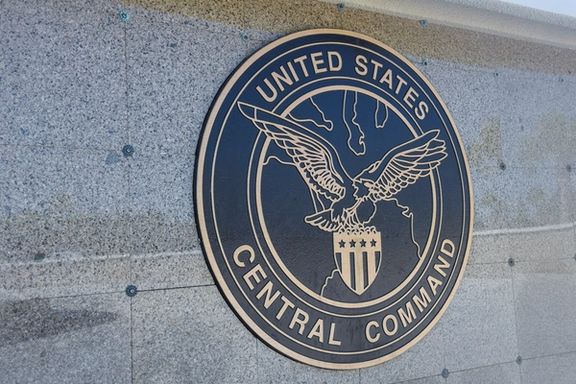
The Pentagon late Friday denounced a rocket attack on a US base in northeastern Syria which had no casualties or damage to the base.
US Central Command, CENTCOM, said in a press release that two rockets were fired at the base in al-Shaddadi, Syria, while a third unfired rocket was found at the rockets’ origin site.
“Attacks of this kind place coalition forces and the civilian populace at risk and undermine the hard-earned stability and security of Syria and the region,” spokesman Col. Joe Buccino said in a statement.
The attacks come as the Turkish military has launched a wave of air raids on Kurdish forces in both Syria and Iraq in retaliation for a bombing in Istanbul on November 13 which left six people killed and 80 injured.
Turkey blames the banned Kurdistan Workers Party (PKK) and the YPG Kurdish forces for the attack, but they deny any involvement.
However, there is a suspicion the rockets were launched by Iranian-backed Shia militias who had previously hit the same area east of the Euphrates River.
Earlier, the US Department of Defense expressed concern about attacks in northern Syria, Iraq and Turkey, saying that it could threaten progress made to defeat the ISIS.
“The recent air strikes in Syria have directly threatened the safety of US personnel who are working in Syria with local partners to defeat the Islamic State,” stressed Pentagon spokesman General Patrick Ryder.
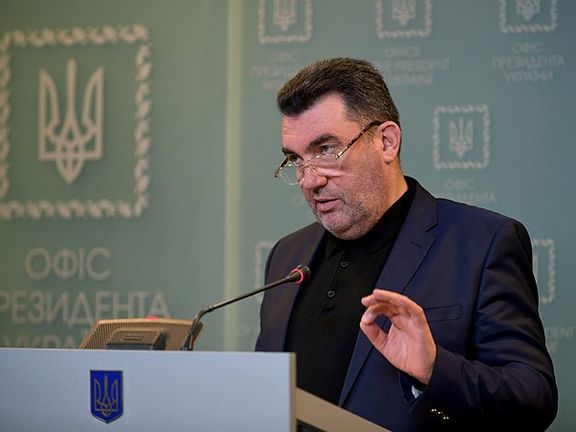
Ukraine’s top security official has confirmed that several Iranian military advisers have been killed during a Ukrainian military strike in Crimea last month, warning that his country will target more.
During an interview with The Guardian from Kyiv published on Thursday, the secretary of Ukraine’s national security and defense council, Oleksiy Danilov, said that the military personnel who were killed were in Crimea to help Russia pilot the Shahed-136 kamikaze drones supplied by the Islamic Republic.
He did not disclose the exact number of casualties but added that any other Iranians on occupied Ukrainian territory supporting the Russian invasion would also be targeted. In October, Israeli media said that 10 were killed in Ukrainian strikes in occupied Crimea.
“You shouldn’t be where you shouldn’t be. They were on our territory. We didn’t invite them here, and if they collaborate with terrorists and participate in the destruction of our nation, we must kill them,” Danilov said.

Russia has been using Iranian drones and missiles in its air attacks against the Ukrainians. In October, it targeted Ukraine’s civilian energy infrastructure, plunging it into blackouts as the winter cold has begun to fall across the country. Amid international outcry over the Islamic Republic’s supply of drones and ballistic missiles for the Russian invasion, Ukrainian President Volodymyr Zelenskiy told a meeting of UN security council late November 23, that the attacks are “an obvious crime against humanity” adding that Kyiv would put forward a resolution condemning “any forms of energy terror”.
On the same day, Ukranian intelligence agencies reported that the Islamic Republic is set to deliver more than 200 Shahed-136 and Arash-2 kamikaze drones, and Mohajer-6 reconnaissance and combat UAVs later in November.
The United States and its European allies have strongly objected to the Iranian move, which is one of the factors in keeping nuclear talks with Tehran dormant.
The United Kingdom defense ministry also said Wednesday that Russia had used hundreds of Iranian-made drones in Ukraine but none since around November 17, suggesting that supplies have run out and Moscow is looking for more Iranian drones. Although the use of Iranian-made drones had met with “limited success”, with most of those launched neutralized, the British ministry said Moscow would “probably seek resupply” as “Russia can probably procure UAVs from overseas more rapidly than it can manufacture new cruise missiles domestically.”
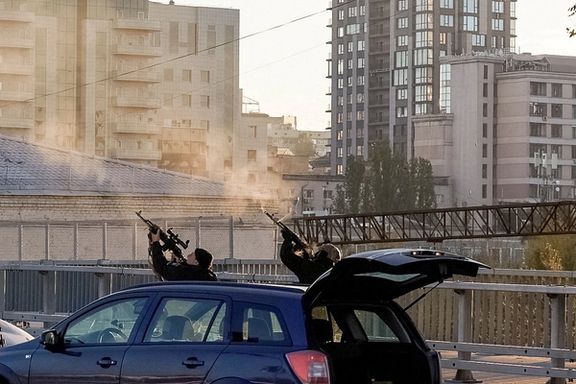
“It is known that the supply of these UAVs will be carried out over the Caspian Sea to the port of Astrakhan,” the Ukrainian intelligence agency said, adding that “The drones will arrive disassembled. Later, on the territory of Russia, they will be assembled, repainted and applied with Russian markings,” the report says. Russia applies its own markings to the Shahed-131 and the Shahed-136, dubbing them the Geran-1 and Geran-2 respectively – apparently to obscure their Iranian origins.
According to a report by CNN, Tehran is preparing to send approximately 1,000 additional weapons, including surface-to-surface short range ballistic missiles and more attack drones to Russia to use in its war against Ukraine.
Iranian foreign minister Hossein Amir-Abdollahian said earlier in the week that Tehran had “sold very few Iranian drones in the framework of defense cooperation with Russia 11 months before the start of the Ukraine war.” Amir-Abdollahian said Iran and Ukrainian military officials had met in a third country to discuss the issue, and that “we are continuing our investigations.”
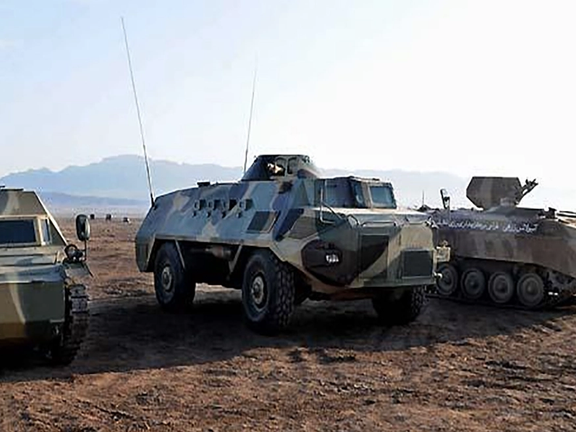
Iran is reinforcing its military on the border with Iraq adjacent to the Kurdistan autonomous region with armored unites, the commander of IRGC ground forces announced Friday.
Mohammad Pakpour emphasized that reinforcing border troops is meant to prevent “infiltration by teams of Kurdish parties based in Iraqi Kurdistan.”
Iran has deployed military firepower against Iranian Kurdish civilian protesters in western Iran, killing at least 12 people since November 16. It has also repeatedly shelled bases of Iranian Kurdishinsurgent groups in Iraq, portraying the popular protests as a separatist movement.
Iran International reported earlier that Iran was sending troops to its Kurdish-majority regions. It is not clear if these reinforcements will be used against civilian protesters or are solely meant to intimidate Kurdish groups in Iraq, that have so far stayed out of the popular protests in Iran and there have been no signs of separatist agitation.
The Iraqi government that has protested Iranian missile attacks on its soil, decided Thursday to work on a plan to boost its own border troops. A member of the Iraqi parliament, who preferred to remain anonymous, told Iran International that Kurdish lawmakers have been putting pressure on the central government to act.
Pakpour said that armor and “special units of ground forces” is being dispatched to the Iraqi border.
Mohammad Esmail Kowsari, a former IRGC commander and currently a member of the Islamic Republic parliament, also confirmed that military units were being dispatched to deal with Kurdish insurgents in Iraq.
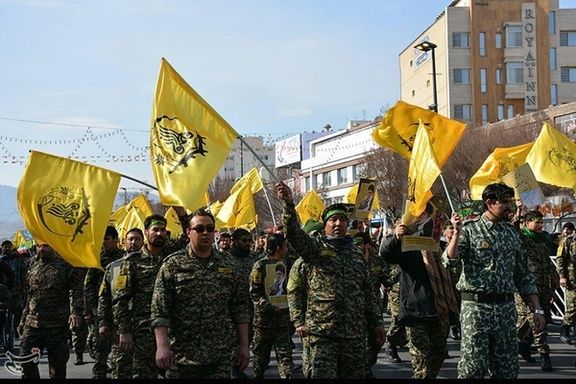
A UK-based organization monitoring Syria says regime forces of Bashar Al-Assad along with Iranian militias have conducted joint exercises near the border with Iraq.
The Syrian Observatory for Human Rights (SOHR) announced Wednesday the joint night maneuvers were staged at the outskirts of Homs Governorate where Al-Tanf base is located.
Al-Tanf is a US military base within territory controlled by the Syrian opposition. It is located 24 km west of the al-Tanf border crossing along the Iraq and Jordan-Syria border.
The Syrian Observatory says heavy weapons were used to raise the fighting readiness of their forces, coinciding with explosions heard in Al-Omar oil field, which is the largest “International Coalition” base in Syria.
Earlier this month, SOHR said it was informed that “Russian officers, Iran’s Revolutionary Guard officers as well as Afghan Fatemiyoun militia are present east of Palmyra in eastern Homs countryside near Al-Tanf base.
Fatemiyoun Brigade is an Afghan Shia militia formed and supported by Iran since 2014 to fight in Syria on the side of the Bashar al Assad’s forces.
“These drills were designed to train Iranian-backed militiamen on the use of short and medium-range Iranian-made missiles on inanimate targets in the Syrian desert and Palmyra military airbase,” added SOHR.
The region has been the scene of clashes between Iranian-backed forces and US troops.
Iran has long backed the Syrian president, Bashar al-Assad’s, government in Syria’s grinding civil war. Iran says it has no troops in Syria but the IRGC military “advisers”.